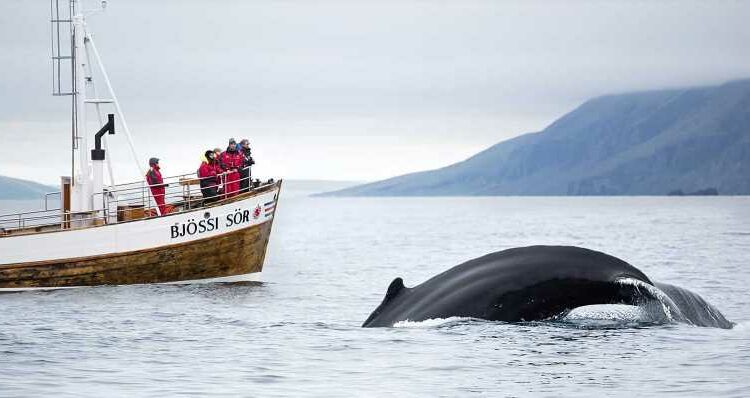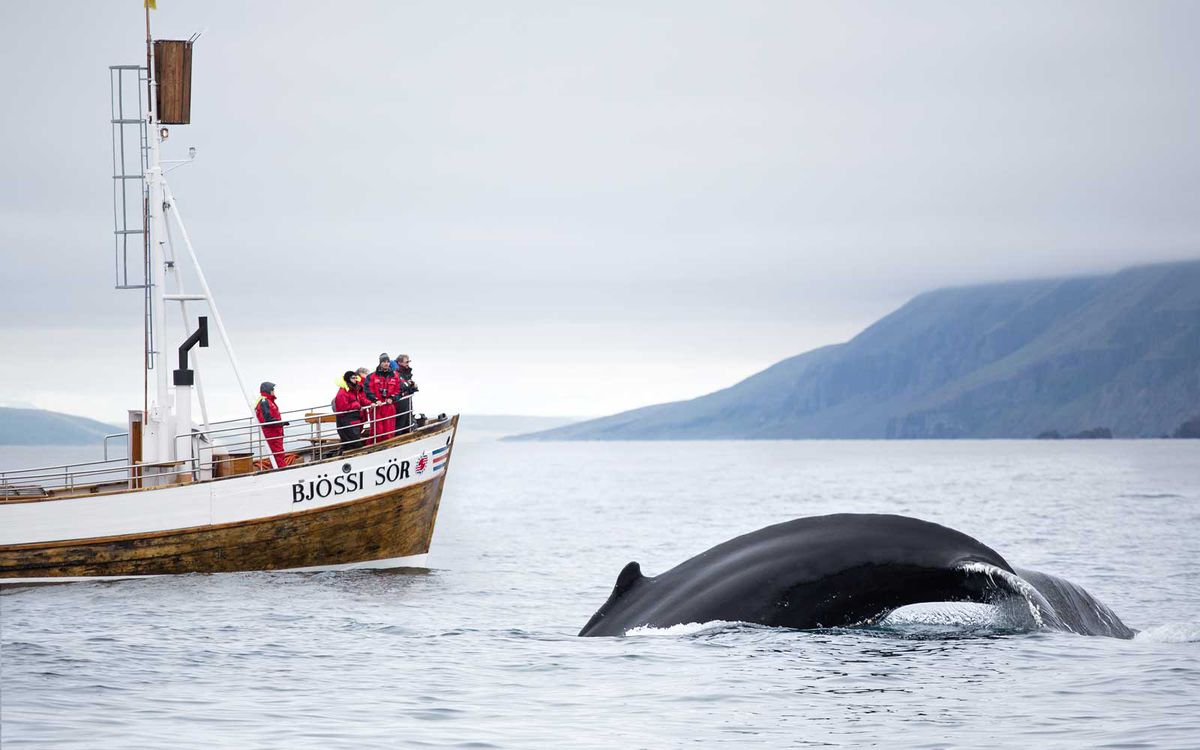Editor's Note: Travel might be complicated right now, but use our inspirational trip ideas to plan ahead for your next bucket list adventure. Those who choose to travel are strongly encouraged to check local government restrictions, rules, and safety measures related to COVID-19 and take personal comfort levels and health conditions into consideration before departure.
Over the last decade, Iceland has become one of Europe's "it" destinations as travelers become increasingly exposed to the ethereal — and highly Instagrammable — landscapes of ancient glaciers and rugged fjords. Before you book your flight to this popular island nation, you'll want to think about everything you want to see and do on your trip because the time of year can really determine what's available. Some attractions, like Iceland's famous hot springs, are open all year, while natural phenomena like the northern lights and midnight sun are best viewed during specific months.
These are the best times to visit Iceland for whale watching, northern lights spotting, and more.
Best Time to Visit Iceland
Best Time to Visit Iceland for Ideal Weather
The summer months — July and August — are Iceland’s warmest, and have long been the most popular time to visit. And June, with its 24 hours of daylight, sees just about as many tourists as the peak of summer. But even during this season, bad weather (rain and intense winds) is not uncommon. The island’s fickle climate often means you can experience all four seasons in a single day.
Iceland can stay relatively warm through the first week of October, so planning a September visit can be ideal (most of the crowds have thinned as children return to school). May, too, provides ample daylight for sightseeing and warmer temps. But if you’re keen on exploring some of the more remote hills and fjords, it may not be the best time to visit, as some roads remain closed while they thaw from winter’s snowy cover. For serious hikers, the best time to visit Iceland is the summer, when all the mountain roads are open and all the most famous trails are accessible.
Best Time to See Whales in Iceland
According to Icelandic marine biologist Dr. Edda Elísabet Magnúsdóttir, the peak months to whale watch in Iceland are June and July. In northern Iceland, you’ll have a wider window to enjoy visits from humpbacks, minkes, and dolphins, which ply the Atlantic from May to August; a few humpbacks even stick around until the end of the year. Blue whales pass through in the summer, too.
The summer months in Reykjavík see promising numbers of minke whales and dolphins, while orcas congregate in West Iceland along the Snaefellsnes peninsula during the first half of the year.
Best Time to Visit the Hot Springs
Iceland’s hot water baths are one of the most essential components of the local culture, both for social as well as wellness benefits. Reykjavík’s public pools are open all year round (and are especially invigorating in the dead of winter), but the island also has hundreds of hidden “hot pots” that tap directly into the geothermal activity under its lava-ridden surface.
Expert Icelandic mountaineer and cofounder of Midgard Adventure, Sigurdur Bjarni Sveinsson, offers the following advice for hot water hunters: “Check them out during the month of September or, even better, the first half of October, when they’re all still accessible by mountain road, but the crowds of tourists have significantly died down.”
For travelers who want to visit the Blue Lagoon, the most famous geothermal spa, the best time to visit is during the off and shoulder seasons, when crowds are thinner (hundreds of thousands of people flock here every year).
Best Time to Visit Iceland for Northern Lights
You’ll need three essential factors to see the aurora borealis: darkness, clear conditions, and a surge in solar activity. Viewings are often elusive, like seeing curtains of neon wind, especially when forecasts predicting roaring flares are marred by transient clouds. To avoid disappointment, travelers should never plan their trip to Iceland solely for the northern lights because the island’s weather is too capricious (statistically, there are more clear nights in Yellowknife, Canada, for example.) The best way to optimize your chances of seeing the northern lights in Iceland is by visiting from mid-October through March, when you have extended hours of nighttime, and getting out into the countryside to reduce the ambient light pollution.
Worst Times to Visit Iceland
Thanks to the country's abundance of stunning landscapes and seasonal natural phenomena, there's really no bad time to visit Iceland. Northern lights seekers flock to the country during the darker winter months, while those chasing the midnight sun and long hours of daylight aim to visit during the summer. Of course, travelers visiting in the spring and fall can take advantage of more moderate weather and daylight, so the best time to visit Iceland really depends on what you want to see and do during your trip.
That said, the warmest months of the year are easily the worst time to visit if you’re hoping to avoid the onslaught of tourists. The months of July and August see the highest number of travelers, with big-ticket attractions like the Blue Lagoon, Golden Circle, South Coast, and Jökulsárlón being particularly overrun. If you're planning to visit during that time, consider exploring more remote corners of the island like the Westfjords or East Iceland, which have their own cache of fjords, vistas, and waterfalls that are just as impressive as the natural attractions surrounding the capital — if not more.
Cheapest Times to Visit Iceland
Getting to Iceland can actually be relatively affordable, especially compared to other European destinations. Travelers from the United States and Europe frequently find flight deals to the island country — keep an eye out for sales on Icelandair to save even more on your journey. Accommodations, tours, attractions, and meals can be pretty pricey throughout the year, but you might be able to save money by visiting during the off-season, which is typically late fall through early spring, excluding December (the summer months are usually the most crowded and most expensive time to visit).
Source: Read Full Article

